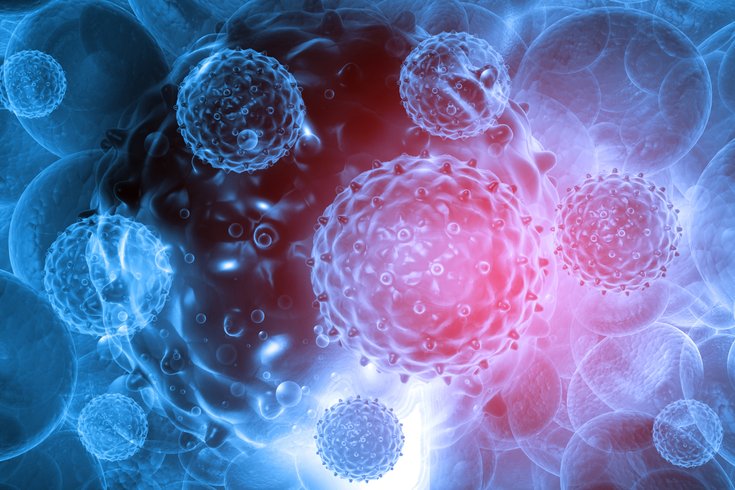Gynecology
Abnormal Uterine Bleeding
Menstruation occurs when the uterine lining (endometrium) breaks down, causing bleeding. The menstrual cycle is controlled by hormones. For pregnant women, changes in reproductive organs prepare the body and no bleeding occurs.
Normal menstruation has many variations. A period can last 2 – 8 days. A cycle (first day of one period to first day of next period) can range from 21 – 45 days. The amount of blood varies by individual but should not be enough to cause anemia.
Abnormal uterine bleeding can usually be diagnosed from a medical history and pelvic exam. A record of your bleeding pattern may also be needed. Sometimes, further diagnostic tests such as labs, pelvic sonogram, or endometrial biopsy are necessary. Treatment of abnormal uterine bleeding varies depending on the cause of the problem and may be medical or surgical.
More information at:
https://www.acog.org/womens-health/faqs/abnormal-uterine-bleeding
Dysmenorrhea
Over half of menstruating women have some pain, usually mild, for 1 – 2 days of their cycle. Sometimes, the pain is so severe that it limits participating in normal activities. This is called dysmenorrhea.
Causes of dysmenorrhea are endometriosis, uterine fibroids, and the natural production of prostaglandins that occur at the onset of the menstrual cycle. To evaluate, your provider may perform a pelvic exam, order labs, or possibly order a pelvic sonogram. In some cases, surgical evaluation is necessary.
Treatment for dysmenorrhea may include medications and techniques to relieve pain. If the cause of dysmenorrhea is determined, treatment will focus upon removing or reducing the problem.
More information at:
https://www.acog.org/womens-health/faqs/dysmenorrhea-painful-periods
Endometriosis
 The endometrium is the lining of the uterus. Sometimes, endometrial tissue grows elsewhere in the body, usually within the pelvis. When this happens, it is called endometriosis. The main symptom of endometriosis is pelvic pain. Pain may occur with intercourse, during bowel movements or urination, or just before or during the menstrual cycle. Pain ranges from mild to severe. Sometimes, endometriosis can lead to infertility.
The endometrium is the lining of the uterus. Sometimes, endometrial tissue grows elsewhere in the body, usually within the pelvis. When this happens, it is called endometriosis. The main symptom of endometriosis is pelvic pain. Pain may occur with intercourse, during bowel movements or urination, or just before or during the menstrual cycle. Pain ranges from mild to severe. Sometimes, endometriosis can lead to infertility.
If you have symptoms of endometriosis, your provider may do a pelvic exam, order a sonogram, and/or recommend surgical evaluation and management. Treatment for endometriosis depends upon the extent of the disease, symptoms, and whether children are desired. It may be treated with medication, surgery, or both.
More information at:
https://www.acog.org/womens-health/faqs/endometriosis
Menopause
Menopause occurs when a woman’s ovaries stop producing eggs and menstrual periods end. The average age is 51 years. Years before menstruation stops, changes in hormone levels can lead to symptoms of menopause. These include irregular periods, hot flashes, night sweats, sleep problems, and vaginal dryness.
Menopause is a normal part of life and does not always need to be treated. However, menopausal changes can be disruptive for some women. Treatments include:
-
- Hormone therapy — Postmenopausal hormone therapy helps relieve hot flashes. For women with a uterus, this includes a combination of estrogen and a progesterone-like medication. Women without a uterus (e.g., hysterectomy) only need estrogen. Hormone therapy is available by pill, skin patch, vaginal ring, or a skin gel, cream, or spray.
- Hormone therapy alternatives — Those bothered by hot flashes who cannot take or prefer to avoid hormone therapy have non-hormonal alternatives.
- Vaginal treatments — There are several treatment options for dryness, including vaginal estrogen.
More information at:
https://www.acog.org/womens-health/faqs/the-menopause-years
http://www.menopause.org
Ovarian Cysts
Many women get cysts on their ovaries during childbearing years. A cyst is a fluid-filled pouch that can be as small as a pea or larger than a grapefruit. An ovarian cyst often causes no symptoms. But, if a cyst twists or breaks, or simply becomes large enough, it may cause pain.
Most ovarian cysts are functional – they result from the natural process of ovulation. These tend to shrink on their own in 1 – 3 months. Less common types of ovarian cysts will not resolve on their own and often require surgical treatment. Cysts are rarely cancerous in women under age 50. Diagnosis of an ovarian cyst typically requires a pelvic exam and often a pelvic sonogram.
More information at:
https://www.acog.org/womens-health/faqs/ovarian-cysts
Pap Tests / HPV Testing
 The Papanicolaou smear (Pap test) is used to screen women for cervical precancer or cancer. Testing for human papillomavirus (HPV) can be done in women over age 30 in conjunction with the Pap test and tests for cervical cancer. Infection with HPV is the most important risk factor for cervical cancer. There are 100+ types of HPV, but most do not cause cancer. At least 80% of women are exposed to the HPV virus during their lifetime. Often, the body’s immune system eliminates the virus before it does harm.
The Papanicolaou smear (Pap test) is used to screen women for cervical precancer or cancer. Testing for human papillomavirus (HPV) can be done in women over age 30 in conjunction with the Pap test and tests for cervical cancer. Infection with HPV is the most important risk factor for cervical cancer. There are 100+ types of HPV, but most do not cause cancer. At least 80% of women are exposed to the HPV virus during their lifetime. Often, the body’s immune system eliminates the virus before it does harm.
HPV is spread by skin-to-skin contact, including sexual intercourse, oral sex, anal sex, or any other contact involving the genital area. HPV is not transmitted by touching an object, such as a toilet seat. Most people who are infected with HPV have no signs or symptoms. Most HPV infections are temporary and resolve within several years. In 10 to 20%, the virus persists and might cause cervical pre-cancer or cancer. This usually takes many years.
Since HPV is transmitted by sexual contact, having multiple sexual partners increases risk for cervical cancer. Condoms provide only partial protection. Smoking can increase the risk fourfold, as does having a condition or taking a medicine that weakens the immune system.
A vaccine is available to help prevent infection with some types of HPV and is recommended for females between the ages of 9 – 26 years.
More information at:
https://www.acog.org/womens-health/faqs/cervical-cancer-screening
http://www.gardasil.com
Pelvic Organ Prolapse
Pelvic organ prolapse is when one or more of the organs inside the pelvis drops from the normal position. This may present a feeling of fullness or pressure in the pelvis or back, problems passing urine or having a bowel movement, urine leakage, or problems with sexual intercourse.
Pelvic organ prolapse may be caused by vaginal childbirth, hormonal changes from menopause, constant coughing (e.g., chronic bronchitis or smoking), repetitive heavy lifting/straining, and/or being overweight. To diagnose, your provider will do a pelvic exam. Other tests may include lab work, imaging tests, or urodynamics.
Treatment for pelvic organ prolapse can be nonsurgical, e.g., pelvic floor physical therapy, Kegel exercises, lifestyle modification, use of a pessary (a device worn in the vagina to help support the prolapsed organs). Or surgical treatment may be the best option. Depending on the specific problem(s), surgery may include one or more of the following: anterior repair, posterior repair, enterocele repair, hysterectomy (with or without ovary removal), vaginal vault suspension, or tension-free vaginal tape.
More information at:
https://www.acog.org/womens-health/faqs/pelvic-support-problems
Polysystic Ovarian Syndrome (PCOS)
Polycystic ovary syndrome (PCOS) causes irregular menstrual periods because monthly ovulation does not occur and levels of androgens (male hormones) in women are elevated. 5 to 10% of females have PCOS. The elevated androgen levels can sometimes cause excessive facial hair growth, acne, and/or hair loss.
The cause of PCOS is not completely understood. It is believed that abnormal androgen levels interfere with normal ovary functioning. There is no single test for diagnosing PCOS. It may be diagnosed based upon symptoms, blood tests, and a physical examination. Experts have determined that a woman must have two out of three of the following to be diagnosed with PCOS:
-
- Irregular menstrual periods caused by anovulation or irregular ovulation
- Evidence of elevated androgen levels based upon signs (excess hair growth, acne, male-pattern balding) or blood tests (high androgen levels)
- Polycystic ovaries on pelvic ultrasound
If ovulation does not occur, the lining of the uterus (endometrium) does not uniformly shed and regrow as in a normal menstrual cycle. Instead, the endometrium becomes thicker and may shed irregularly, which can result in heavy and/or prolonged bleeding. Irregular or absent menstrual periods can increase a woman’s risk of endometrial overgrowth (endometrial hyperplasia) or even endometrial cancer.
PCOS is associated with elevated levels of insulin in the blood and type II diabetes. Many women with PCOS do not ovulate regularly, and it may take these women longer to become pregnant. Oral contraceptives are the most commonly used treatment for regulating menstrual periods in women with PCOS. These medications protect the woman from endometrial (uterine) cancer or overgrowth by inducing a monthly menstrual period. They are often effective for treating problems with acne and abnormal hair growth. Anti-androgen medications and certain medications that treat diabetes may also be used. For overweight women, weight loss is one of the most effective approaches for managing insulin abnormalities, irregular menstrual periods, and other symptoms of PCOS.
More information at:
http://www.acog.org/~/media/For%20Patients/faq121.pdf?dmc=1&ts=20131108T2052292025
Premenstrual Syndrome [PMS] & Premenstrual Dysphoric Disorder (PMDD)
 Premenstrual syndrome is a combination of emotional and physical symptoms that can disrupt health, career, and personal life. Premenstrual dysphoric disorder (PMDD) is a severe form of PMS in which symptoms of anger, irritability, and internal tension are prominent.
Premenstrual syndrome is a combination of emotional and physical symptoms that can disrupt health, career, and personal life. Premenstrual dysphoric disorder (PMDD) is a severe form of PMS in which symptoms of anger, irritability, and internal tension are prominent.
Premenstrual symptoms vary in type, timing, and severity among women, but as many as 80% of American women show one or more symptoms of PMS. The most common symptoms are premenstrual irritability, depression, bloating/weight gain, breast tenderness, and carbohydrate cravings. Symptoms similar to premenstrual syndrome may have other possible causes, so your provider may ask you to keep a symptom diary for several months, undergo lab tests, and/or perform a physical examination.
Treatment of PMS is aimed at raising serotonin levels. Good nutrition, adequate sleep, regular exercise, and stress management help alleviate symptoms. Sometimes, medication is recommended to augment lifestyle changes.
More information at:
https://www.acog.org/womens-health/faqs/premenstrual-syndrome
